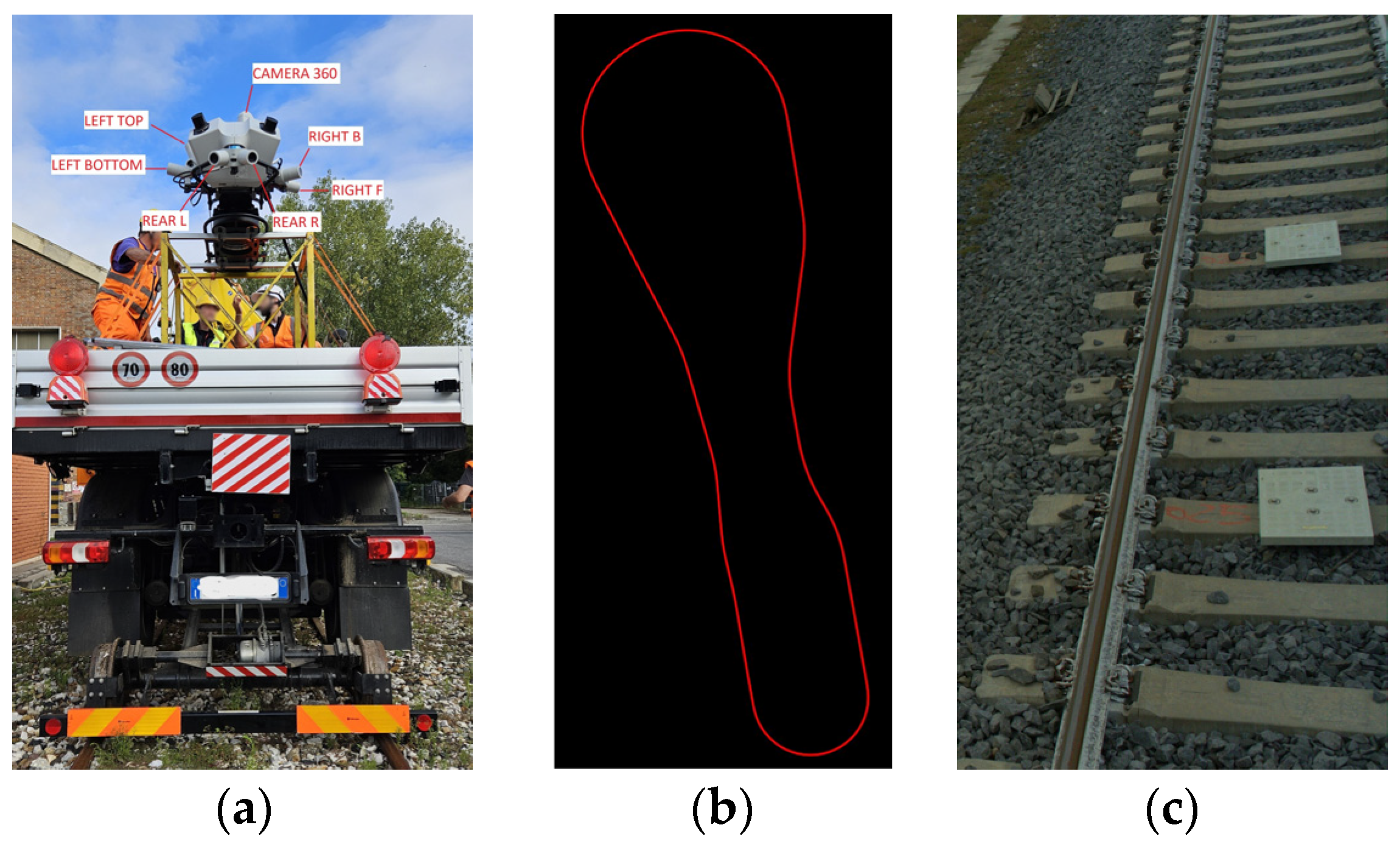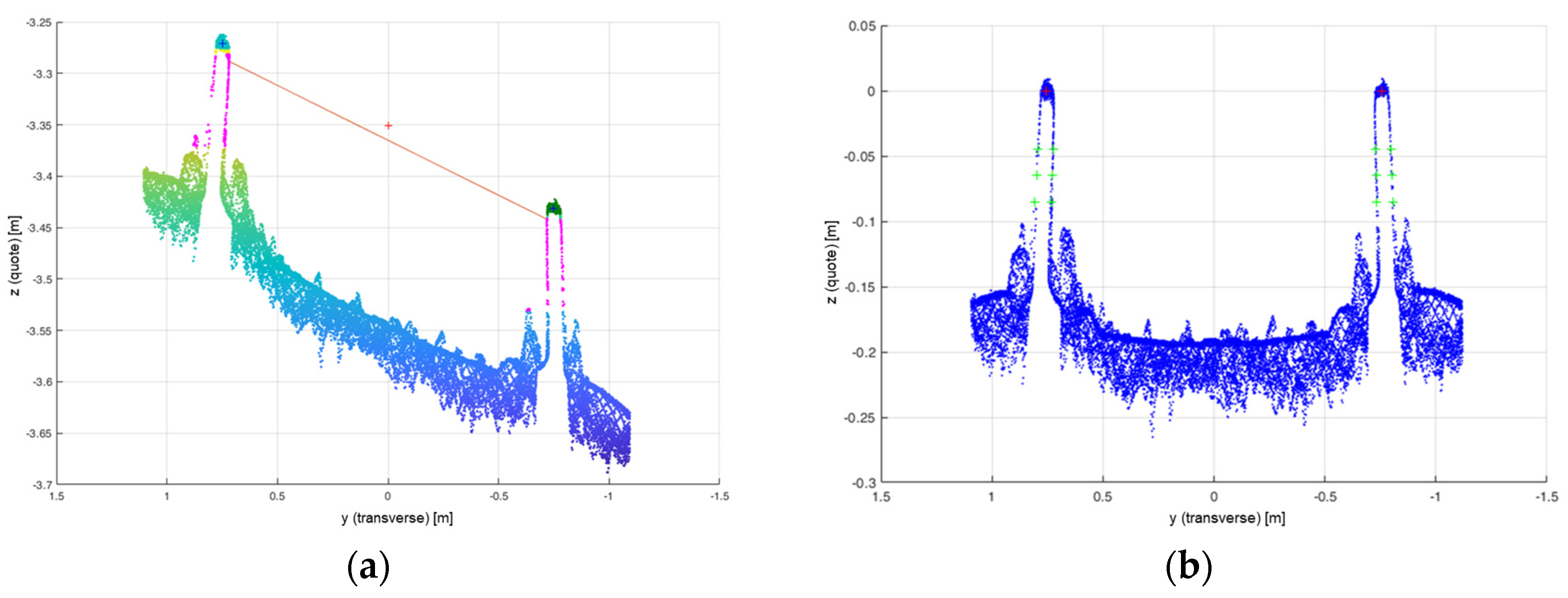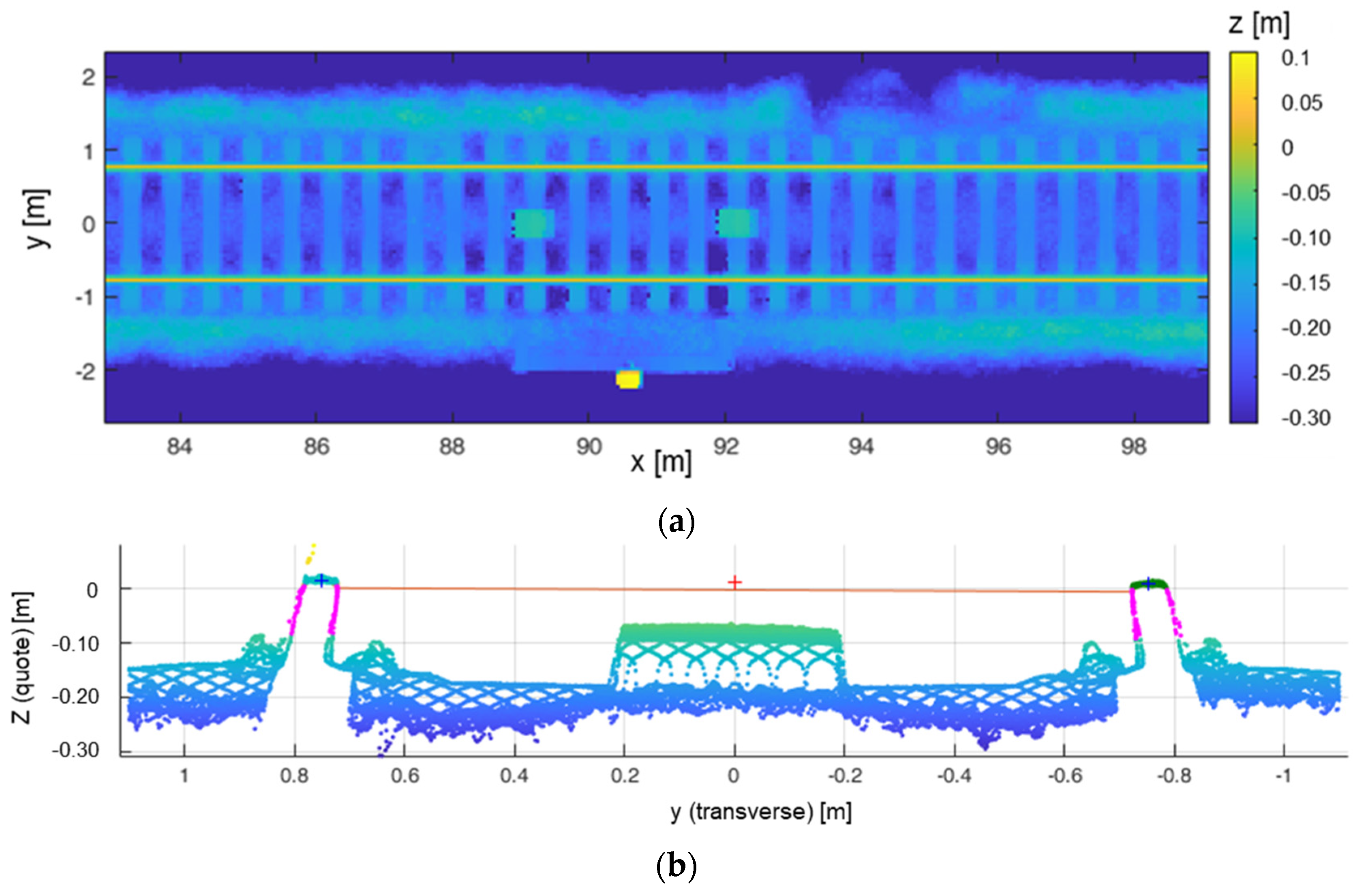Centimeter-Accurate Railway Key Objects Detection Using Point Clouds Acquired by Mobile LiDAR Operating in the Infrared †
Abstract
1. Introduction
2. Materials and Methods
3. Results
4. Discussion
Author Contributions
Funding
Informed Consent Statement
Data Availability Statement
Conflicts of Interest
References
- European Rail Traffic Management System (ERTMS). Available online: https://www.era.europa.eu/domains/infrastructure/european-rail-traffic-management-system-ertms_en (accessed on 21 May 2025).
- Di Stefano, F.; Chiappini, S.; Gorreja, A.; Balestra, M.; Pierdicca, R. Mobile 3D scan LiDAR: A literature review. Geomat. Nat. Hazards Risk 2021, 12, 2387–2429. [Google Scholar] [CrossRef]
- Leica Geosystems. Available online: https://leica-geosystems.com/it-it/products/mobile-mapping-systems/hardware/leica-pegasus-trk-evo (accessed on 21 May 2025).
- Dekker, B.; Ton, B.; Meijer, J.; Bouali, N.; Linssen, J.; Ahmed, F. Point Cloud Analysis of Railway Infrastructure: A Systematic Literature Review. IEEE Access 2023, 11, 134355–134373. [Google Scholar] [CrossRef]




| Characteristics | Value |
|---|---|
| Absolute accuracy in [X,Y], [Z] | 11 mm, 11 mm (no GNSS outage), 14 mm, 16 mm (60 s GNSS outage) |
| Maximum pulse rate | 2 × 2.2 MHz |
| Maximum rotational speed | 2 × 267 Hz |
| Precision | 1 mm |
| Maximum range 50% reflectivity at 200 kHz/500 kHz | 182 m |
| Maximum range 10% reflectivity at 200 kHz/500 kHz | 182 m |
| Number of returns | 1 |
| Minimum range | 0.3 m |
| Field-of-view | 360° full circle |
| Data acquisition rate | Max. 2 × 1.094 million pixel/s. |
| Detection Method | Accuracy | Precision | Recall |
|---|---|---|---|
| Section Profile | 0.9 | 0.935 | 0.923 |
| Rectangle | 0.867 | 0.986 | 0.911 |
| Smoothness | 1 | 1 | 1 |
Disclaimer/Publisher’s Note: The statements, opinions and data contained in all publications are solely those of the individual author(s) and contributor(s) and not of MDPI and/or the editor(s). MDPI and/or the editor(s) disclaim responsibility for any injury to people or property resulting from any ideas, methods, instructions or products referred to in the content. |
© 2025 by the authors. Licensee MDPI, Basel, Switzerland. This article is an open access article distributed under the terms and conditions of the Creative Commons Attribution (CC BY) license (https://creativecommons.org/licenses/by/4.0/).
Share and Cite
Palombi, L.; Durazzani, S.; Morabito, A.; Poggi, D.; Raimondi, V.; Lastri, C. Centimeter-Accurate Railway Key Objects Detection Using Point Clouds Acquired by Mobile LiDAR Operating in the Infrared. Proceedings 2025, 129, 39. https://doi.org/10.3390/proceedings2025129039
Palombi L, Durazzani S, Morabito A, Poggi D, Raimondi V, Lastri C. Centimeter-Accurate Railway Key Objects Detection Using Point Clouds Acquired by Mobile LiDAR Operating in the Infrared. Proceedings. 2025; 129(1):39. https://doi.org/10.3390/proceedings2025129039
Chicago/Turabian StylePalombi, Lorenzo, Simone Durazzani, Alessio Morabito, Daniele Poggi, Valentina Raimondi, and Cinzia Lastri. 2025. "Centimeter-Accurate Railway Key Objects Detection Using Point Clouds Acquired by Mobile LiDAR Operating in the Infrared" Proceedings 129, no. 1: 39. https://doi.org/10.3390/proceedings2025129039
APA StylePalombi, L., Durazzani, S., Morabito, A., Poggi, D., Raimondi, V., & Lastri, C. (2025). Centimeter-Accurate Railway Key Objects Detection Using Point Clouds Acquired by Mobile LiDAR Operating in the Infrared. Proceedings, 129(1), 39. https://doi.org/10.3390/proceedings2025129039






